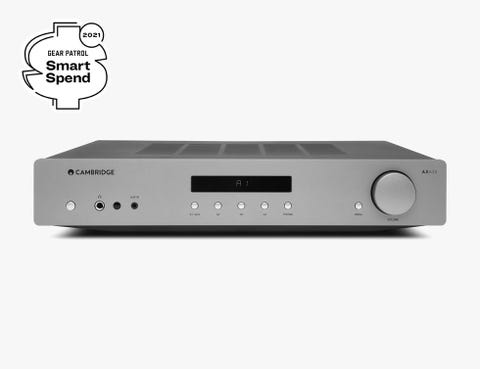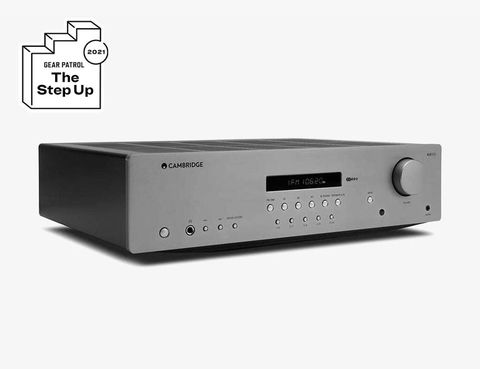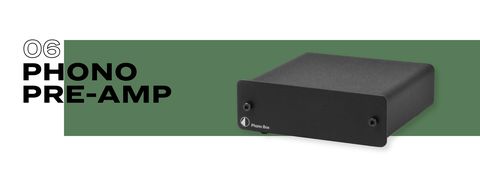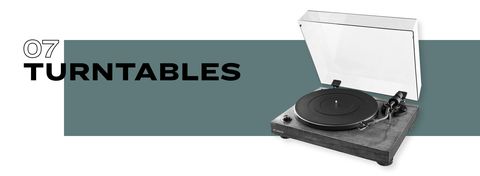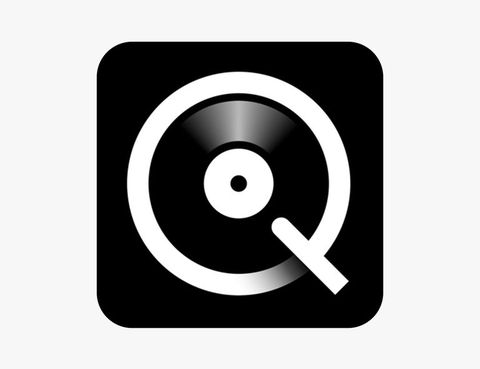A Beginner’s Guide to Home Audio Equipment

Streaming has made it easier than ever to listen to music. If you have a smartphone or computer, you quite literally have access tens of millions of tracks. All you have to do is open an app, pick a song and press play. Boom, magic.
But there’s a difference between listening to music, and listening to music well. The details of a home audio setup are big deal when it comes hi-fi, and especially so today: Vinyl sales have risen for the last 15 years. Sales of CDs and cassette tapes are up. And more and more lossless streaming services are launching. In short, it’s a damn good time to get into hi-fi.
For anybody looking to dive into the world of hi-fi, and potentially build an analog, digital or hybrid system, it’s first important to know the crucial audio components — what they are, why they’re important and how they all work together.
Conversion from analog to digital and back requires special technology to do the job well, and in order to accommodate both analog and digital formats into a home audio setup, you’re going to need to have a basic understanding of some of these components.
However, don’t think you need to spend a fortune in order to attain audiophile bliss: for each component, we present different tiers of product priced according to different budgets, though even the budget system will provide you with a setup worlds better than simply plugging a pair of earbuds into your computer.
On that note, godspeed, and happy listening!
Speakers (or loudspeakers) are the most important components in any audio system because they have the biggest impact on the sound you actually hear. In simplest terms, they take the electrical signal that’s fed from your playback device (whether a turntable, CD player or digital streamer) and then vibrate their innards to produce sound. There are many internal components within a speaker that will drastically affect the end sound, such as the crossovers — which divvy the signal into reproduction in different drivers — the size and material of the cabinet, and the quality and number of speaker drivers.
At the root of it, there are two main types of loudspeakers you should know about: passive and active. Passive speakers require external amplification from a receiver or amplifier to work — they need the signal from the playback device to be amplified for them by another device. Active speakers have their own built-in amplification that’s optimized for that specific speaker. There are tradeoffs to each, of course. Passive speakers are more affordable and way more flexible (as you can experiment with different external components to do the amplification part), while active speakers are more expensive but don’t require multiple components to work.
Oh, and you may have heard people talk about the quality of the cables that send that signal, but that doesn’t actually matter that much.
Headphones are tiny speakers that sit on your ears. The left earcup of the headphones does the same job as the left-sided speaker in a stereo pair, and the same is true for the right earcup and the right-sided speaker. The main difference is that headphones obviously go on your head, which also creates a controlled environment for sound, while the sound quality of speakers can be largely affected by the room that they’re in.
There’s a wide variety of different types of headphones, from open-back to closed-back as well as headphones made with various kinds of drivers (dynamic, electrostatic or planar magnetic), but the biggest news lately has been the growth of wireless headphones. These headphones accept a radio signal over the air instead of through cables and then use their on-board DSP (digital-signal processing) and amplification to turn it into sound.
The job of an amplifier, also referred to as a power amplifier or a stereo amplifier, is to take a weak electrical signal from a playback device and, well, amplify it so that your speakers or headphones can actually play it. Without an amplifier, you wouldn’t be able to hear your music very loudly, if at all. This is especially true of high-fidelity open-back headphones, which require a very amplified signal.
In this age of modern hi-fi, “integrated” amplifiers have kind of taken the place of a traditional power amplifier. Integrated amps combine the traditionally seperate components of power amplifier, a phono preamp (more on that in a second) and a number of wireless and wired connectivity options, so they can act as the central hub of both a digital and an analog hi-fi system.
Oh, and if you have any kind of wireless headphones or wireless speakers, they have a built-in amplifier.
Traditionally, a receiver is just an amplifier with a built-in radio, which allows you to play music on your hi-fi system without needing an analog source like a CD player, cassette tape player or a turntable. These days most receivers perform a similar function as a hub for wireless signals, but have a number of other connectivity options, allowing you to stream music from your smartphone or computer directly to your system.
There are two main types of receivers: stereo receivers and AV (audio/video) receivers. The A stereo receiver is only capable of powering a two-channel system (generally a set of passive speakers), while an AV receiver, also known as a home theater receiver, is designed to connect to your TV and power multiple channels, ideally for a surround sound system with many different speakers. Essentially, an AV receiver is just a way more capable and versatile stereo receiver.
(Note: You can buy separate DAC and amplifier components, but a combined component — like the above integrated DAC/Amp combos — are very popular and your best bet for a small space, like a desktop setup.)
The digital-to-analog converter, or DAC, is a vital component that’s usually built into most amplifiers. It converts a digital signal sent from your smartphone or computer into an analog signal that an amplifier can actually amplify. A DAC is only necessary when you have a digital source like a computer or smartphone, as opposed to an analog source like a turntable or CD player.
The only time you really need to consider buying an external DAC is if your source, be it your smartphone or computer, is introducing a lot of noise (graininess or static) to your music; you’re more likely to hear this noise if you’re listening to a nicer pair of headphones or speakers. Every smartphone and laptop has its own built-in DAC (and amplifier), but they’re usually not particularly good. Buying an external DAC or a DAC/amp combo is an easy way to upgrade your desktop’s or smartphone’s audio quality if it’s bad enough that you’re noticing its flaws.
A phono preamplifier, also known as a phono stage, is a necessary component in any turntable hi-fi system. Its job is twofold. First, it takes the extremely weak signal from the turntable’s phono cartridge and pre-amplifies on the way to the amplifier, so your speakers can play it at a reasonable volume. Second, it equalizes the signal so that the record sounds as true as possible to the original recording.
These days a lot of turntables come with built-in phono preamplifier — we call these “integrated” turntables — which allows you to connect the them directly to an amplifier or powered speaker. It’s simple and convenient system. However a dedicated external phono preamplifier connected to a turntable will almost always sound better because moving the preamp further away from the moving bits of the turntable reduces the amount of excess noise introduced to your signal.
A turntable, or record player, is an analog device used for playing vinyl. There are a number of key components working in tandem that are required for the turntable to work, but in a nutshell the turntable’s stylus (or needle) gets dropped on a spinning record, it picks up the vibrations from the record’s grooves and it then converts them into an electrical signal. That signal is then sent to the phono preamplifier and then amplifier, where’s it’s amplified so that the speakers or headphones can actually play it.
A phono cartridge is a complex electro-mechanical device that sits on the end of a turntable’s tonearm and holds the stylus in place. It’s also responsible for converting the vibrations that the stylus picks up into an analog signal. The best phono cartridges are the ones that are the most accurate at this process. An easy and fun way to improve your turntable’s audio quality is to buy a better phono cartridge. There’s a wide of variety of phono cartridges out there, ranging from $100 to well over a $1,000.
There are two main types of phono cartridges, moving magnet (MM) or moving coil (MC), which use different mechanisms to convert vibrations into an audio signal. The gist is that MM cartridges are significantly easier to make, but they’re less sensitive and deliver a less accurate signal. If you own an entry-level turntable, there’s a good chance it has an MM cartridge. Not all turntables are compatible with all phono cartridges. Before upgrading to a different phono cartridge, you first need to make sure it’s compatible with your existing turntable.
A digital music streamer (or network streamer) is the ultimate hi-fi component for the home. It’s essentially a specialized computer that can store and stream for your entire digital music collection. It’s a great option for people who people who want to transfer their CD collection into a digital library, or people who want to get the most out of their lossless streaming service, such as Tidal or Qobuz, and play high-resolution audio at home.
Dedicated digital music streamers can vary a lot in terms of their features, compatibility and streaming support. The best ones, such as the Cambridge Audio CXN V2 or the Naim Audio Uniti Atom, have their own interface, built-in storage and are compatible with high-end services like Roon or BluOs. It’s a rabbit hole.
A CD (or compact disc) player is digital playback device that uses a tiny laser beam to scan a rotating compact disc, starting from the center and working its way to the outer rim. You might have thought that dedicated home CD players were a thing of the past, but there’s more of a desire for lossless (or CD-quality) music, both streamed and physical, more manufacturers are releasing new CD players. The only difference is that this new breed also has support for wireless services, too, making them way more versatile that older models.
Audio quality took a big hit after in the 90s in large parts thanks to the iPod, Napster and wide-spread popularity of compressed digital audio files like MP3s. But the resurgence of vinyl and the rise of lossless streaming services, like Tidal, Deezer and Qobuz, have made it easier than ever to listen to higher-quality audio again.
The term “lossless audio” is generally defined as audio that’s CD or vinyl quality (16-bit/44.1 kHz). However, several lossless streaming services allow you to listen to higher resolution audio files (such as 24-bit/192kHz or even even 32-bit/384 kHz).











